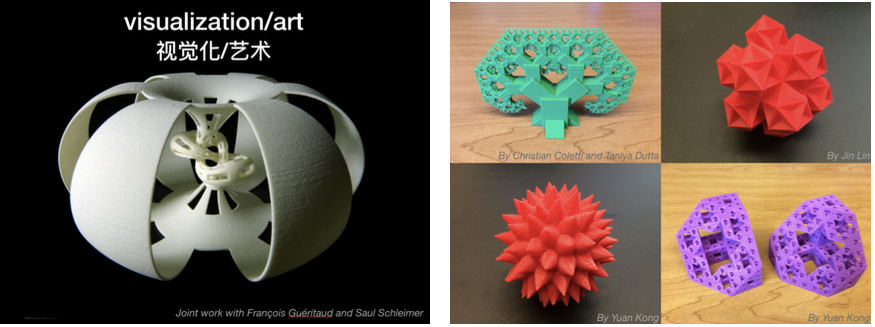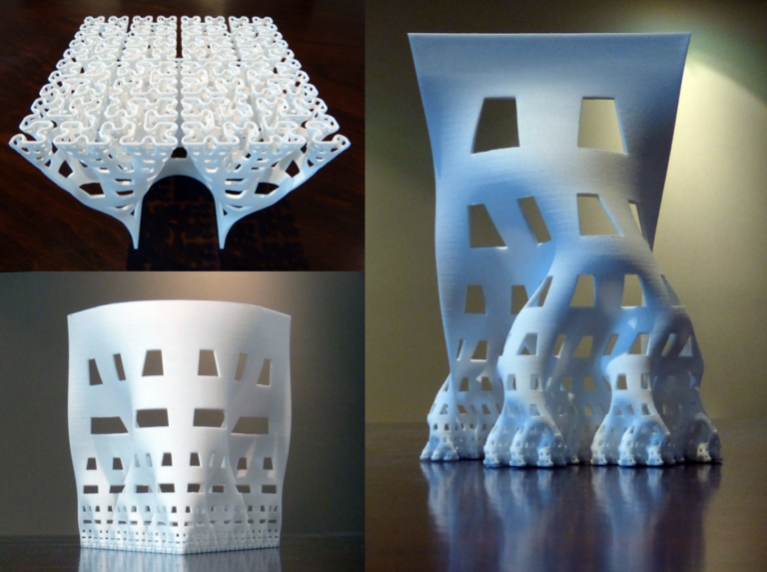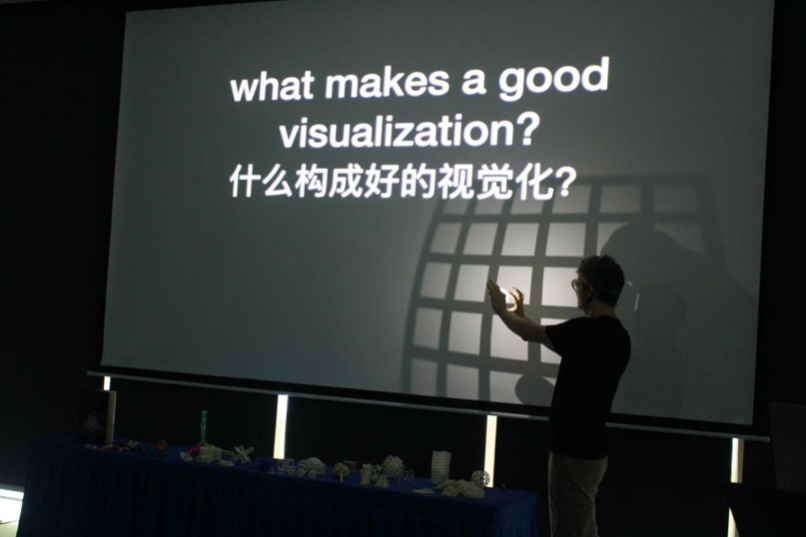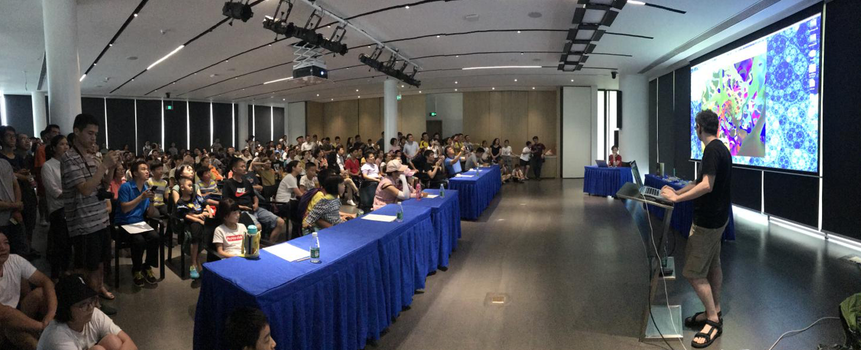At 15:00 on August 10th, 2019, an intriguing and fascinating lecture on mathematics communications, Artistic Mathematics: Truth and Beauty, was held at Qiuxian Pavilion in Shenzhen Talent Park. The lecturer, Henry Segerman, is an associate professor in the Department of Mathematics at Oklahoma State University and is also a well- known mathematical artist. He introduced mathematical visualizations to the Shenzhen’s citizens who are fond of mathematics and led the audience to the deeper understanding of mathematics as well as to experiencing mathematics from different perspectives and to appreciating the beauty of mathematics.
Professor Tao Tang, the Chair Professor in the Department of Mathematics at Southern University of Science and Technology, the Executive Director of SUSTech International Center for Mathematics, and the Academician of Chinese Academy of Sciences, gave the welcome speech and thanked for the Talent Park’s supports in this event. He said that Prof. Segerman is an outstanding mathematical artist and expressed the confidence in the success of this public talk in mathematics communications.

Henry Segerman

Figure 8 knot complement 3D printing works of Prof. Segerman’s students
During the lecture, Prof. Segerman shared his work in mathematics visualizations with the audience, talked about visual art, and explained what makes a good visualization. He took 3D printing as an incision point and presented the important example in 3- dimensional topology: the figure 8 knot complement. Then, he indicated that students will learn more effectively and actively through hands-on activities and showed some of the students’ works in his 3D printing classes from his department.

“the walking skyscraper”, space- filling curves
Prof. Segerman also introduced a specific type of fractal: the space- filling curves which can be formed by making a line segment into zigzags and increasing these lines to fill the plane. This is one way to construct the space- filling curves. By replacing the animation of time with the one of space when we construct the curves, we will have a 3- dimensional surface. When we use different types of curves, such as the Hilbert Curve, the Sierpinski Arrowhead Curve, or the Dragon Curve, we will have different outcomes.

Stereographic projections
With a 3D printed sphere and a flashlight, Prof. Segerman demonstrated how to transmit information effectively through visualizations. When he placed the light source at the precisely right position, he casted shadows of the curves on the sphere and mapped them to a straight line grid on the plane. This raised the question: what makes a good visualization?
He thinks that a good visualization had three key elements: first, it is as surprisingly amazing as the magic and brings about curiosity in learning more; second, mathematics is accurate and it carries only facts; last, the 3D print is an effective medium and it is different from computer animations.

Spherical videos
In the end, Prof. Segerman used spherical videos to make himself from different time and space appear in the same scene. The two of him could even greet each other. He said when he transformed the function and converted the spherical data to the flat one, it would be doubled and that was how the video came from.

At the lecture
The atmosphere of the lecture was lively and the applause continued. After the talk, the audience was actively asking questions and Prof. Segerman answered carefully and patiently. This lecture was hosted and interpreted by Ms. Hsiao Lan, Helen, Yu from SUSTech International Center for Mathematics.